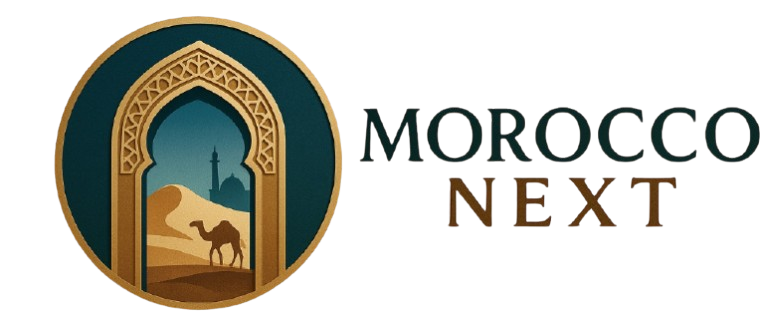Where is Morocco on the World Map? A Comprehensive Guide

Morocco on the world map :
Located in North Africa, is a country of stunning contrasts and rich cultural heritage. But where exactly is Morocco on the world map? Understanding its geographical location can enhance your appreciation of its unique landscapes, vibrant cities, and historical significance. In this article, we’ll explore Morocco’s geographical features, neighboring countries, and its cultural and historical importance in the region.
Geographical Location of Morocco
Morocco is situated in the northwest corner of Africa. It is bordered by the Atlantic Ocean to the west, the Mediterranean Sea to the north, Algeria to the east, and Western Sahara to the south. The country’s coordinates are approximately 31.9634° N latitude and 7.0926° W longitude.
Map Overview
To visualize where Morocco is located on the world map, it is essential to understand its placement relative to significant landmarks and countries:
- North: The Mediterranean Sea and Spain, specifically the southern coast, are just a short distance away. The narrow Strait of Gibraltar separates Morocco from Europe, making it one of the closest points between Africa and Europe.
- East: Algeria shares a long border with the country , which stretches for about 1,559 kilometers (approximately 970 miles). This border has historically been significant for trade and cultural exchange.
- South: Western Sahara, a disputed territory, borders Morocco. The region is known for its desert landscapes and is rich in mineral resources.
- West: The Atlantic Ocean offers the country a coastline of approximately 1,835 kilometers (1,145 miles), providing opportunities for trade, fishing, and tourism.
Visual Reference

Map Source: Wikipedia
Major Cities in Morocco
The country is home to several major cities that reflect its diverse culture and history. Here are a few key cities and their significance:
1. Rabat
Rabat, the capital city of the country, is located on the Atlantic coast. Known for its historic sites, Rabat is home to the Royal Palace, the Hassan Tower, and the Mausoleum of Mohammed V. The city serves as the political and administrative center of Morocco.
2. Casablanca
Casablanca is Morocco’s largest city and a major economic hub. Famous for its modern architecture and the stunning Hassan II Mosque, which is one of the largest mosques in the world, Casablanca is a vibrant city that blends tradition with modernity.
3. Marrakech
Marrakech is one of Morocco’s most famous cities, known for its historic medina, bustling souks, and the iconic Koutoubia Mosque. The city attracts millions of tourists each year, making it a vital part of Morocco’s tourism industry.
4. Fes
Fes is renowned for its ancient medina, which is a UNESCO World Heritage Site. The city is home to one of the oldest universities in the world, the University of Al Quaraouiyine, and is famous for its traditional crafts, such as pottery and leatherwork.
5. Tangier
Located at the northern tip of the country, Tangier is a city where cultures converge. Its strategic location near the Strait of Gibraltar has made it a melting pot of various influences, including European and African. The city’s old medina and the nearby Hercules Cave are popular tourist attractions.
Natural Landscapes
Morocco’s diverse landscapes range from majestic mountains to expansive deserts and picturesque coastlines.
The Atlas Mountains
The Atlas Mountains stretch across the country and are divided into three ranges: the High Atlas, the Middle Atlas, and the Anti-Atlas. The highest peak, Toubkal, reaches an elevation of 4,167 meters (13,671 feet) and is a popular destination for hikers and trekkers.
The Sahara Desert
The Sahara Desert, the largest hot desert in the world, extends into southeastern the country. The Erg Chebbi and Erg Chigaga dunes are famous for their stunning landscapes, offering opportunities for camel trekking and stargazing.
Coastal Regions
the country boasts a beautiful coastline along both the Atlantic Ocean and the Mediterranean Sea. Popular coastal cities like Essaouira and Agadir offer beautiful beaches, water sports, and a laid-back atmosphere.
Cultural Significance
Morocco’s cultural heritage is a blend of Berber, Arab, and French influences, reflecting its historical significance as a crossroads of civilizations.
Language and Religion
Arabic is the official language, and Amazigh (Berber) is also widely spoken. French serves as a secondary language, especially in business and government. Islam is the predominant religion, shaping the country’s culture, traditions, and daily life.
Festivals and Traditions
Moroccan culture is rich in festivals and traditions. Events such as the Marrakech International Film Festival and the Fes Festival of World Sacred Music attract visitors from around the globe. Traditional music, dance, and cuisine play an integral role in Moroccan celebrations.
Traveling to Morocco
Understanding where the country is located on the world map is crucial for planning your travels. Here are some essential travel tips:
Best Time to Visit
The best time to visit the country is during spring (March to May) and fall (September to November) when the weather is mild and pleasant. Summer can be scorching, especially in the interior regions.
Getting There
Major international airports in the country include Mohammed V International Airport in Casablanca, Marrakech Menara Airport, and Fès–Saïs Airport. Direct flights from various countries make it accessible for international travelers.
Transportation
Morocco offers various transportation options, including buses, trains, and taxis. The train system is efficient for traveling between major cities, while buses are a popular choice for reaching smaller towns.
Accommodation
From luxury hotels to traditional riads and budget hostels, Morocco provides a wide range of accommodation options. Staying in a riad in the medina offers a unique experience of Moroccan hospitality.
Conclusion
Understanding where Morocco is on the world map opens up a world of exploration and cultural richness. Whether you’re drawn to its stunning landscapes, vibrant cities, or rich history, Morocco is a destination that offers something for every traveler.
For more information on traveling in Morocco, visit Moroccan Next for tips, guides, and resources.
External Resources
All Categories
- No categories


